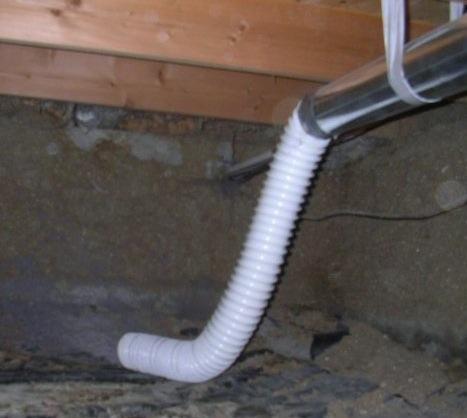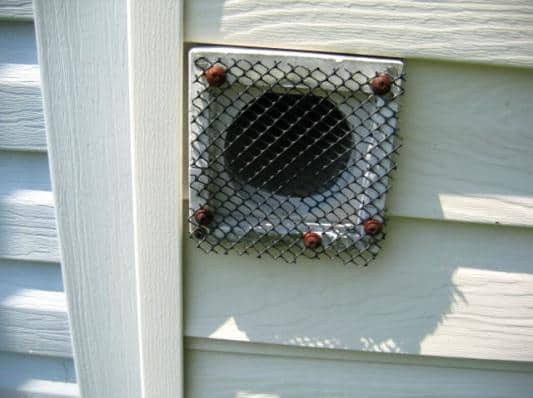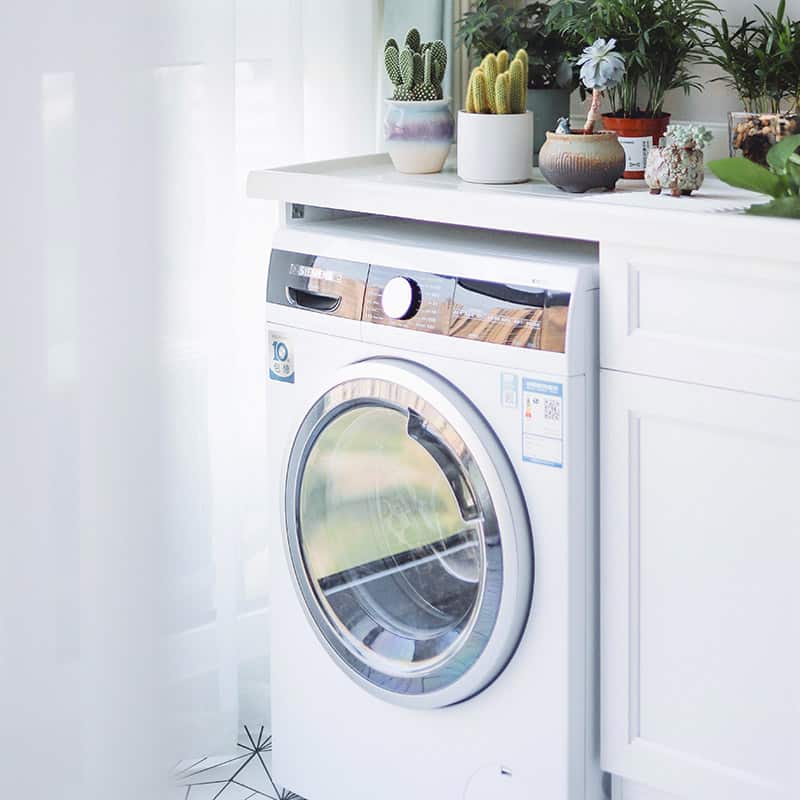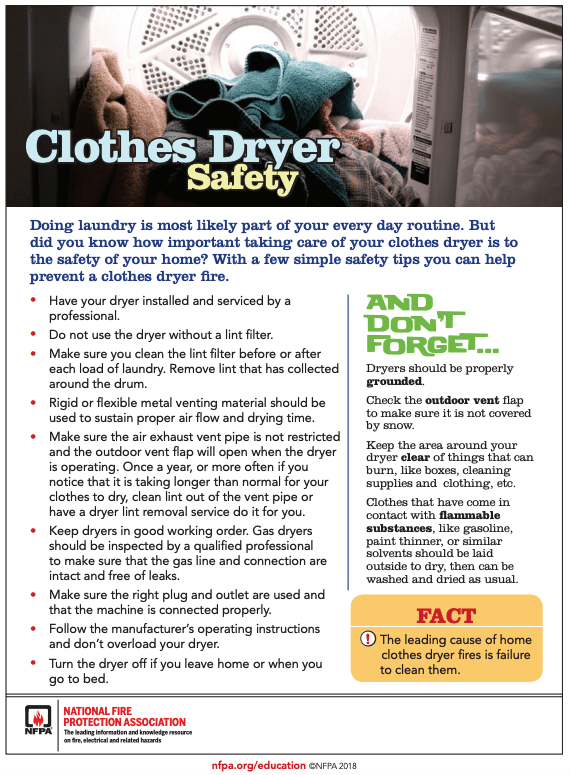Inspecting dryers, washing machines, and refrigerators is not required by the NC standards of practice (SOP). However, this does not preclude inspecting these appliances. We are allowed to exceed the SOP and some inspectors do inspect these appliances as a courtesy to their clients. Though because we are not required to inspect the appliance, we do need to inspect systems and components that are used in conjunction with the appliance. One such system is the venting or exhaust duct for the dryer. In this article, we hope to guide you through inspecting this system.
Inspection Points
First, make sure the vent is connected to the appliance and vents to the exterior of the home
Vent Discharge
A clothes dryer will vent a significant amount of water vapor with each use. If the vent is discharging into the crawlspace, attic, or other building cavities, the potential for moisture-related damage is high. Additionally, with moisture, the possibility of other environmental conditions is possible (mold or mildew).
Vent Material
Check the duct material type. Ducts made of vinyl, nylon, or thin metallic foil are a potential hazard and should be called out for replacement. The use of this type of duct material will void most manufacturer’s warranties. Spiral duct designs will trap lint, which can clog the duct, requiring the appliance to work harder and longer to dry the clothes. This can lead to premature mechanical failures and it can create a fire hazard. Finally, PVC piping is not approved for dryer exhausts by most modern building standards.
Approved materials are smooth metal with a thickness of 28 gauge and 4 inches in diameter.

Vent Installation
Look carefully at the installation of the duct system. The ducts should not have any fasteners at the seams as they can trap lint. The joints should be installed with the leading pipe edge installed into the trailing pipe in the direction of airflow to prevent the buildup of lint.
Dryer exhaust vents should be installed as straight as possible with the minimum number of elbows. A maximum distance from the appliance is specified as 35 feet by most manufacturers. Deductions to this requirement should be taken for each elbow and for the transition pipe that connects the dryer to the vent piping.
4 inch radius, mitered 45-degree elbow
4 inch radius, mitered 90-degree elbow
2.5 feet
5 feet
Vent Support
Proper support must be present. The ducts should be secured and supported at regular intervals not to exceed 12 feet. Best practices recommend providing support every 4 feet. The duct should not sag and screws into the duct are not permitted.
Vent Routing
Just like HVAC ducts routing dryer vents through an attached garage should be avoided if possible as this could void the fire rating of the garage wall coverings and possibly allow noxious fumes into the home. If there are no other options then to route the duct through the garage it must be made of 26 gauge sheet metal and have no openings into the garage.
Vent Termination
Check the termination point of the duct to ensure it is outside and has a functional damper to prevent back drafting. There should be no screen or grid installed. Screens will trap lint which could result in poor performance of the appliance and also create a fire hazard.
Termination points should be at least 12 inches above the ground, 3 feet away from any building opening, and 10 feet from any HVAC equipment.
Look for signs of nesting materials or animal activity (droppings on the siding) as dryer vents are a favorite place for nuisance pests to build a nest. Also, check for excessive lint discharge at and around the vent. This is an indication that the vent has excessive lint build-up and requires cleaning.

Makeup Air
One overlooked condition to look for is sufficient makeup air. Just like gas appliances need combustion air a dryer is like an air pump and requires makeup air to function properly. Be suspect if the appliance is in a small enclosed space, the door is sealed or if other gas fueled appliances are present. Generally up to 300 CFM of makeup air may be necessary.
Dryer Safety
We are allowed by our standard to report on safety issues and provide maintenance recommendations to ensure our clients have the best understanding of the home they are purchasing and the information needed to operate and maintain the home and its systems.
Since the dryer is a frequently used appliance and the venting system is usually out of sight or hidden it usually suffers from lack of or deferred maintenance. Therefore, we suggest you provide your clients with some recommendations to help them maximize the use and efficiency of the appliance and to reduce the risk for potential adverse conditions developing like fire hazards from built-up lint.
Here are some basic safety, maintenance, and operation recommendations. An easy way to including additional information is to embed a link in your report that directs them to a location with additional information on dryer use and safety. You can also include this information on your website and link to your website from your report. This will also help drive traffic to your website, Bonus!
- Always read and follow the manufacture’s operation and maintenance instructions.
- Clean the lint filter at the appliance before and after each load of laundry
- Remove any visible lint in and around the dryer
- Have the exhaust vent cleaned at least once a year by a professional
- Check, clean and service gas dryers on a frequent basis
- Don’t over load the dryer
- Turn off the dryer when you are not home or are going to bed
- Install a fire extinguisher in the laundry area
- Install a smoke alarm and if a gas dryer is present a carbon monoxide alarm
- Do not dry clothes that are soaked with flammable liquids such as gasoline, oils or stains.
Dryer Fire Stats
- In 2010-2014, U.S. municipal fire departments responded to an estimated 15,970 home fires involving clothes dryers or washing machines each year. These fires resulted in annual losses estimated at 13 civilian deaths, 440 civilian injuries, and $238 million in direct property damage.
- Failure to clean the dryer (34 percent) is the leading cause of home clothes dryer fires.
- More home clothes dryer fires occur in the fall and winter months, peaking in January.





